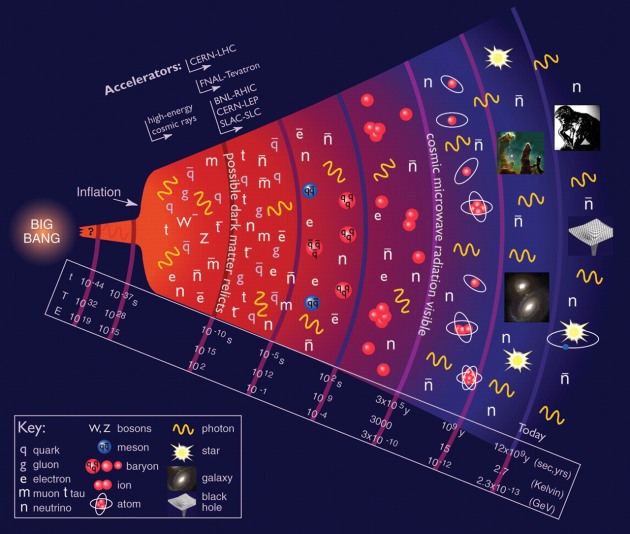(单词翻译:单击)
This would mean that the universe was only half the size and age that Sandage believed—ten billion years. Matters took a further lurch into uncertainty when in 1994 a team from the Carnegie Observatories in California, using measures from the Hubble space telescope, suggested that the universe could be as little as eight billion years old—an age even they conceded was younger than some of the stars within the universe. In February 2003, a team from NASA and the Goddard Space Flight Center in Maryland, using a new, far-reaching type of satellite called the Wilkinson Microwave Anistropy Probe, announced with some confidence that the age of the universe is 13.7 billion years, give or take a hundred million years or so. There matters rest, at least for the moment.
这意味着,宇宙的大小和年龄只有桑德奇认为的一半──100亿年。1994年,情况突然变得更不确定,加利福利亚州卡内基天文台的一个小组根据哈勃天文望远镜的测量结果,提出宇宙的年龄只有80亿年──连他们也承认,这个年龄比宇宙里某些恒星的年龄还要小。2003年2月,一个来自美国国家航空和航天局及马里兰州高达德太空飞行中心的小组,利用一种名叫威尔金森微波各向异性探测器的新型卫星,信心十足地宣布,宇宙的年龄为137亿年,误差1000万年左右。事情被搁置下来,至少在一段时间里。
You are of course entitled to wonder what is meant exactly by "a constant of 50" or "a constant of 100." The answer lies in astronomical units of measure. Except conversationally, astronomers don't use light-years. They use a distance called the parsec (a contraction of parallax and second), based on a universal measure called the stellar parallax and equivalent to 3.26 light-years. Really big measures, like the size of a universe, are measured in megaparsecs: a million parsecs. Thus when astronomers refer to a Hubble constant of 50, what they really mean is "50 kilometers per second per megaparsec."
(注:你当然有权知道“常数为50”或“常数为100”到底是什么意思,答案在于天文量度单位,除了在交谈中,天文学家不用光年,他们用的距离单位是“秒差距”基于一种普遍使用的、名叫恒视差的量度方法,相当于3.26光年。确实大的尺度。那个常数以每百万秒差距每秒公里数来表示,因此,哈勃常数为50的意思是“每百万秒差距每秒50公里”)。


